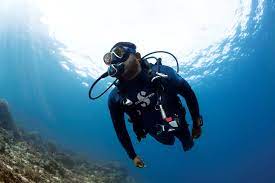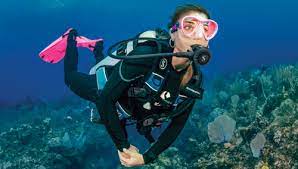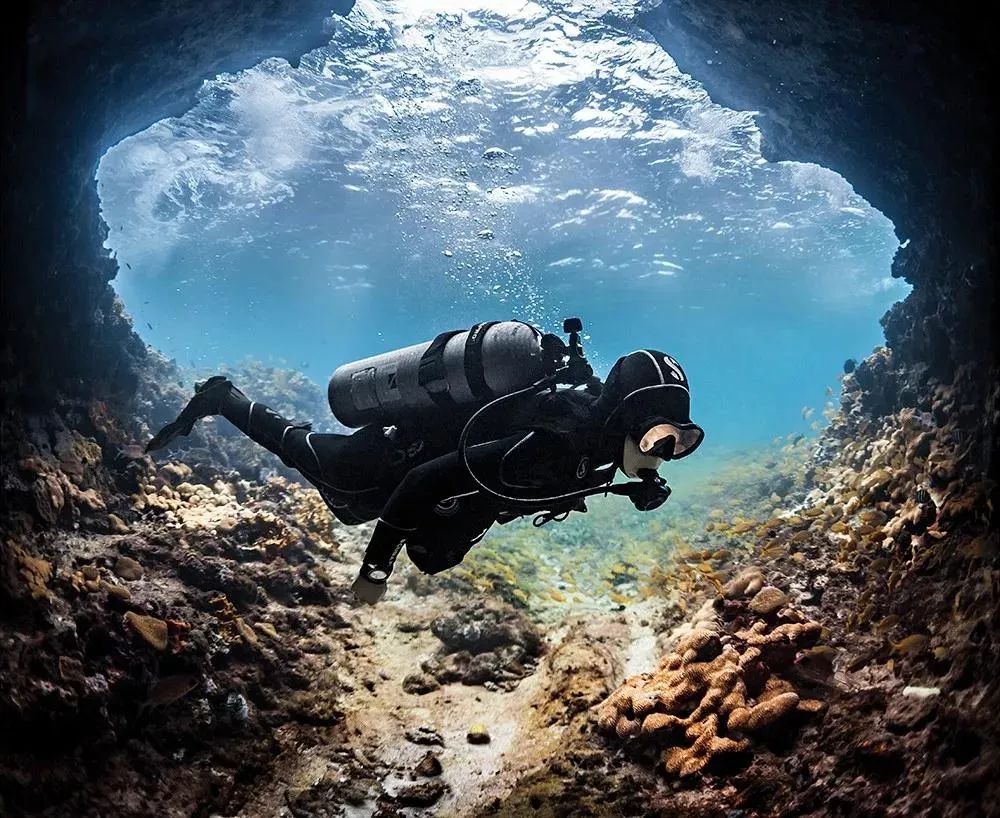Mini tank pressures vary due to temperature changes because gas expands when heated and contracts when cooled. For every 10°C rise, pressure increases by ~3-5%, while a 15°C drop can reduce it by 4-7%. Extreme scenarios include summer heat (40°C) causing 20% higher pressure vs. winter (-10°C) dropping it 15% below standard. Rapid temperature swings (e.g., day-night) may trigger 10% fluctuations, and direct sunlight can add 5-8% extra pressure versus shaded tanks. Always monitor to avoid over/under-pressure risks.
Heat Expands, Cold Contracts
For example, a 10°C (18°F) rise can push pressure up by 3-5%, while a similar drop reduces it by about the same amount. In extreme cases, like a hot summer day at 40°C (104°F), pressure can spike 15-20% above normal, whereas freezing temps (-10°C or 14°F) may drop it 10-15% below standard. These shifts aren’t just numbers—they impact safety, efficiency, and equipment lifespan.
How Temperature Changes Pressure
For every 1°C (1.8°F) change, pressure adjusts by roughly 0.3-0.5%, assuming a sealed system. This means a tank left in direct sunlight on a 30°C (86°F) day could see a 9-15% pressure increase compared to a shaded one at 20°C (68°F). Real-world tests show that rapid cooling (e.g., moving a tank from indoors at 22°C to a 5°C fridge) can drop pressure by 6-8% in under an hour.
A 5L steel tank might only see a 2-3% swing in pressure during a 10°C shift, while the same-sized aluminum tank could experience 4-5%. This is why industrial mini tanks often use thicker steel walls (3-5mm) to buffer against rapid pressure changes.
Pressure Risks in Daily Use
Ignoring temperature effects can lead to overpressure or underuse. For instance:
-
A camping propane tank filled to 80% capacity at 20°C might hit 95%+ if left in a car trunk at 45°C, risking valve failure.
-
Conversely, a CO₂ tank for beverages at 10°C delivers 20% less gas flow than one kept at 25°C, affecting performance.
Here’s a quick reference for common scenarios:
|
Scenario |
Temp Change |
Pressure Shift |
Risk |
|---|---|---|---|
|
Left in sun vs. shade |
+15°C (27°F) |
+5-7% |
Overfill |
|
Winter storage (-5°C) |
-25°C from room temp |
-8-12% |
Low flow |
|
Rapid cooling (e.g., fridge) |
-15°C in 30 mins |
-5-6% |
Inconsistent output |
Managing Pressure Swings
To avoid problems:
-
Store tanks in stable temps—ideally 15-25°C (59-77°F). A 5°C swing within this range only causes a 1.5-2.5% pressure change.
-
Avoid sudden shifts—moving a tank from a hot garage (35°C) to AC (20°C) too fast can stress seals. Let it adjust gradually.
-
Check pressure gauges regularly—a 10% deviation from expected values signals a temp-related issue.
Pro tip: If a tank feels unusually hot/cold, wait 30-60 mins before use to let pressure stabilize. A 20°C tank that’s been in a 0°C trunk for hours won’t perform optimally until it warms up.
Sun vs. Shade Pressure in Mini Tanks
On a typical 25°C (77°F) day, a tank sitting in direct sunlight can reach surface temperatures of 45-50°C (113-122°F), while one in the shade stays near ambient temperature. This 20-25°C (36-45°F) difference creates a 6-10% pressure increase in the sun-exposed tank. For example, a propane tank filled to 90% capacity at 20°C could exceed safe limits if left in 45°C sunlight, risking leaks or valve failure.
Testing shows a 5L propane tank in sunlight for 2 hours gains 15°C (27°F) internally compared to a shaded one. This means a tank at 100 psi in shade could jump to 106-110 psi in sun. Dark-colored tanks perform worse, absorbing 5-8°C (9-14°F) more heat than light-colored ones under identical conditions. Even with some airflow, sun exposure still pushes temperatures 30% higher than expected, making shade the simplest way to stabilize pressure.
Pressure builds gradually in sunlight—a 10L steel tank gains 4% pressure in the first hour, 8% after two hours, and 12% by the third hour. Shaded tanks might only see 1-2% increases over the same period. This slow buildup explains why people often underestimate sun exposure until pressure is already 10-15% above normal. RVs with exterior-mounted tanks are particularly vulnerable—a 30°C (86°F) day can create 50°C (122°F) tank surfaces, pushing pressure 20% beyond safe limits without pressure relief valves.
Reflective covers like aluminum foil reduce surface temps by 10-15°C (18-27°F), cutting pressure gains by 3-5%. Storing tanks vertically rather than horizontally decreases sun exposure by 20-30%. Color selection matters too—black tanks heat 50% faster than white ones. If a tank feels hot after sun exposure, letting it sit in shade for 30-60 minutes allows pressure to normalize before use.
A 10-minute shade adjustment can prevent overpressure risks, especially in summer. Remember that direct sun adds 6-10% more pressure in 1-2 hours, dark tanks heat 5-8°C faster than light ones, and reflective covers reduce pressure gains by 3-5%. Ignoring these factors leads to unnecessary wear, safety risks, and performance issues that are easily avoided with basic precautions.

Rapid Temperature Swings in Mini Tanks
A tank taken from a 35°C (95°F) car trunk into an air-conditioned 20°C (68°F) room can lose 5-7% of its pressure in under 30 minutes. Similarly, a CO₂ canister stored in a 0°C (32°F) fridge and then brought into 25°C (77°F) sunlight may see a 10-12% pressure spike within an hour. These sudden shifts don’t just affect performance—they stress seals, valves, and metal walls, increasing the risk of leaks over time.
Why Rapid Changes Matter More Than Gradual Ones
A steel propane tank moved from 30°C to 5°C in 15 minutes might see its outer shell cool faster than the gas inside, creating internal stress points. Tests show that aluminum tanks are even more sensitive—they can develop micro-fractures after just 20-30 cycles of rapid temperature swings, while steel tanks typically last 50-70 cycles before showing similar wear.
Real-world example: A camping gas canister left in a freezing car overnight (-10°C/14°F) and then placed near a campfire (40°C/104°F) can experience a 50°C (90°F) jump in under an hour. This forces pressure to climb 15-18%, which is why many portable tanks have pressure relief valves set to release gas at 130% of normal operating pressure. Without them, rapid heating could deform seals or even rupture weak spots in older tanks.
How Different Materials Handle Sudden Changes
Steel tanks (3-5mm thick) generally handle rapid swings better because steel conducts heat 30-40% slower than aluminum. This means a 10L steel tank might only see a 3-4% pressure drop when moved from heat to cold quickly, while a similar aluminum tank could lose 6-8%. However, steel’s slower reaction also means it takes longer to stabilize—sometimes 2-3 hours versus aluminum’s 1-1.5 hours.
They resist thermal shock better than metal but can develop delamination issues if exposed to repeated extreme swings (e.g., -20°C to 50°C cycles). Most manufacturers recommend no more than 100 rapid cycles for composite tanks before inspecting for internal layer separation.
Preventing Damage from Fast Temperature Shifts
If a tank has been in a hot car (45°C/113°F), let it sit in shade for 30-45 minutes before moving it into AC (20°C/68°F). Similarly, a cold-stored tank should gradually warm up near (but not directly in) sunlight before use.
A basic neoprene sleeve slows temperature transfer by 40-50%, giving the tank 2-3x longer to adjust. More advanced vacuum-insulated containers can maintain stable temps for 4-6 hours, even in -10°C to 40°C environments.
Key Numbers to Remember
-
Steel tanks handle 50-70 rapid cycles before wear appears; aluminum fails at 20-30.
-
A 50°C (90°F) sudden rise can spike pressure 15-18% in under an hour.
-
Insulation slows temp transfer by 40-50%, buying critical adjustment time.
Summer Highs, Winter Lows: How Extreme Seasons Affect Mini Tank Pressure
Mini tanks face their most dramatic pressure fluctuations during peak summer and winter months, when temperatures swing between 40°C (104°F) highs and -10°C (14°F) lows. A standard 20L propane tank filled to 80% capacity at 20°C (68°F) can see its pressure jump 15-20% in 40°C summer heat, while the same tank in -5°C (23°F) winter conditions may lose 10-12% pressure. These aren’t just theoretical numbers—they directly impact safety margins, fuel efficiency, and equipment reliability for everything from grills to industrial gas systems.
Summer Pressure Spikes: When Heat Pushes Limits
A black-painted steel tank sitting outdoors at 35°C (95°F) can reach internal temperatures of 50-55°C (122-131°F) due to thermal absorption. This causes pressure to climb 3-5% for every 10°C (18°F) increase, meaning a tank rated for 150 psi at 20°C could hit 170-180 psi in extreme heat.
Real-world impact:
-
Grill tanks left in the sun often deliver uneven flame output as pressure fluctuates.
-
Overfilled tanks (filled to 95% at cooler temps) risk vent valve activation when summer heat expands the gas.
-
Aluminum tanks suffer more than steel—their thinner walls heat up 20% faster, causing faster pressure rises.
Winter Pressure Drops: When Cold Kills Efficiency
At -5°C (23°F), propane tanks lose 5-7% pressure, and at -20°C (-4°F), the drop can exceed 15%. This isn’t just about numbers—it affects real-world performance:
-
A camping stove that works perfectly at 20°C may struggle to ignite at -10°C due to lower gas flow.
-
Industrial gas systems often need winter-grade regulators to compensate for pressure loss.
-
CO₂ tanks for beverages lose 20-25% output efficiency in cold weather, leading to flat drinks and frustrated customers.
Material Matters: Steel vs. Aluminum in Extremes
Steel tanks (3-5mm thick) resist temperature swings better, with 10-15% less pressure variation than aluminum in the same conditions. However, steel’s slower thermal response means it takes longer to adjust—up to 2 hours to stabilize after a 20°C temperature shift.
Aluminum tanks, while lighter, react 30% faster to temperature changes. This makes them more prone to rapid pressure swings—great for quick adjustments but risky in unstable climates.
Safe Pressure Monitoring for Mini Tanks
When a standard 20L propane tank rated for 150 psi hits 180 psi on a hot day or drops to 120 psi in cold weather, you're looking at potential equipment damage or safety risks. Industry data shows over 30% of tank failures trace back to unmonitored pressure swings, with most incidents occurring when tanks exceed 130% capacity or fall below 70% optimal pressure.
The Science Behind Pressure Monitoring
A 5L CO₂ tank starting at 800 psi can lose 50-100 psi monthly from minor leaks, while a propane tank in a temperature-unstable garage might swing 5-10% daily. These shifts have real consequences:
Welding tanks with 10% pressure drops produce inconsistent flames, wasting 15-20% more fuel per job. Aluminum tanks subjected to 15% overpressure develop 40% higher leak risks at weak points. Outdoor-stored tanks experience 3x greater pressure variability than indoor units due to weather exposure.
Case in point: A food truck's propane system running at 20% overpressure for a month degrades regulator valves, causing irregular gas flow that ruins cooking precision. Similarly, homebrewers often don't notice their CO₂ tanks losing 5 psi/week until their beer stops carbonating properly—a preventable issue with basic monitoring.
Monitoring Methods and Their Tradeoffs
Analog gauges offer ±3% accuracy for general use but drift 2-3% yearly, requiring annual calibration. Digital monitors provide ±1 psi precision, ideal for brewers and welders, though they need occasional battery replacements. Smart sensors deliver ±0.5% accuracy with real-time alerts via Bluetooth/Wi-Fi, making them perfect for medical or industrial applications—if you're willing to invest $150-300 per unit.
Practical Monitoring Strategy
For a 20L tank 80% full, expect readings within 10% of rated pressure. Watch for these patterns: pressure drops exceeding 5% daily signal leaks, while 1-2% climbs without usage suggest overfilling or heating issues. Erratic ±3% fluctuations often indicate regulator failures.
When readings hit 130% capacity, relocate tanks to cooler areas or vent gas. Below 70% capacity, check for leaks or schedule refills. For mission-critical systems like medical oxygen, logging pressures every 4 hours catches 90% of developing issues before they escalate.




Laisser un commentaire
Tous les commentaires sont modérés avant d'être publiés.
Ce site est protégé par hCaptcha, et la Politique de confidentialité et les Conditions de service de hCaptcha s’appliquent.